Common Puffball / Summer / Autumn / Edible
Step into the enchanting world of the Common Puffball, scientifically known as Lycoperdon Perlatum, as we unravel the delicate delights and culinary possibilities of this remarkable mushroom.
In this blog post, we invite you to discover the unique qualities and culinary potential of the Common Puffball. With its distinctive round shape and white spore-filled interior, this mushroom holds a whimsical charm that captivates foragers and food enthusiasts alike. Join us as we delve into the habitat, identification, and proper harvesting techniques of this edible fungus, ensuring a safe and enjoyable culinary experience. From savory stir-fries to delectable risottos, Lycoperdon Perlatum offers a versatile addition to your gastronomic repertoire. Let’s celebrate the gastronomic wonders of the Common Puffball and unlock the culinary delights it holds, as we embrace the flavors and textures that nature has so graciously provided.
Scientific Name
Lycoperdon Perlatum
Common Names
Common Puffball, Warted Puffball, Wolf Fart, Devils Snuff Box
Family
Lycoperdaceae
Habitat
Virtually any type of woodland, also heaths, meadows and hedgerows.
Identifying Features:
Cap:
No real cap. The fruit body is usually round or pear-shaped with a small foot or stem. The surface is covered in tiny pyramid-shaped ‘pearls’, which when rubbed off leave a net-like pattern. The surface is white/cream when young darkening with age, they will develop a darker central umbo when they have reached maturity. The flesh when young is almost pure white and spongy, as they mature this will turn to a yellow/green colour as the spores develop.
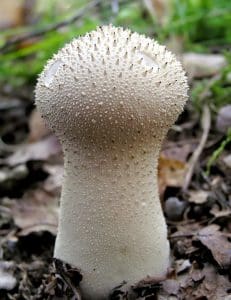
Stem:
The stem is similar in colour to the fruiting body and is also covered in the ‘pearls’. More like an inverted cone than a true stem.
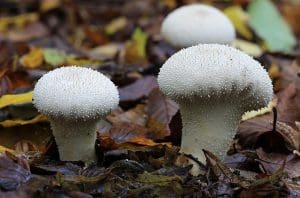
Smell:
Mild mushroom scent.
Spores:
Olive/Brown.
Uses
In food
The Common Puffball doesn’t have the strongest flavour so they are probably best mixed with other stronger tasting mushrooms or my favourite way to eat them is to cut them into bite-sized pieces, dip them into flour, egg and then breadcrumbs and deep fry them as a vegan-friendly ‘chicken nugget’ alternative.
I’ve seen them described as ‘poor man’s sweetbreads’ to give you an idea of the texture and flavour.
Harvesting
Ignore any that have begun to turn yellow, green or brown as they will be unpleasant to eat. As you more familiar with them you’ll soon be able to ID them without cutting them all in half.
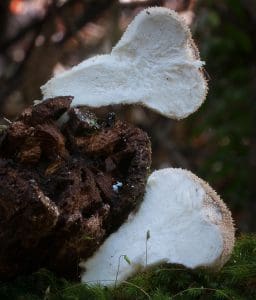
Known hazards
The spines or ‘pearl-like structures on the surface and the spores have been known to cause lung irritation when inhaled, so I tend to brush these off while I’m picking them.
They are also known to bioaccumulate heavy metals that may be present in the soil so they should only be collected from ‘clean’ sites.
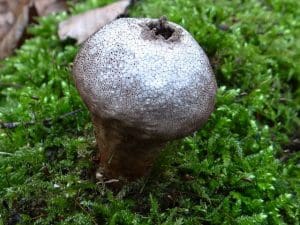
Potential lookalikes
Other members of the Lycopodium family, all are edible as long as they are still, pure white in the middle.
Death caps (Amanita Phalloides) but these lacks the ‘pearl’ structures on the surface and when cut in half you will see an immature mushroom ready to burst free.
The Common Earthball (Scleroderma Citrinum) they tend to be firmer in texture and when cut in half you will see a mass of purple/black spores.
The Common Stinkhorn (Phallus Impudicus) can also like similar when they are young, these lack the spiny surface and when cut in half will reveal the ‘witches eye’ rather than being pure white.
Extra Notes
The genus name Lycoperdon translates to ‘wolfs flatulence’ this is due to the way their spores are dispersed. As they age a small hole will develop on the top of the fruiting body and then when an animal or raindrop touches the mushroom a large cloud of spores is released.
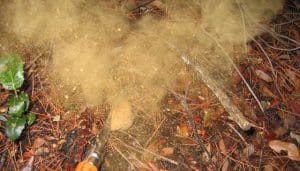



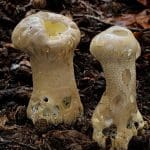
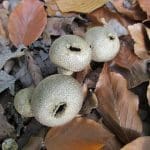
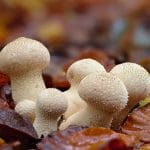
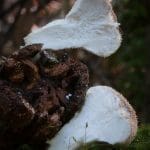
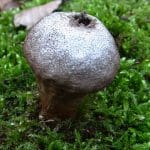
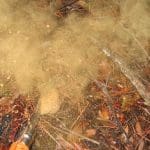
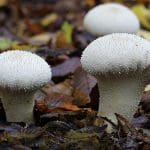
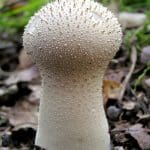


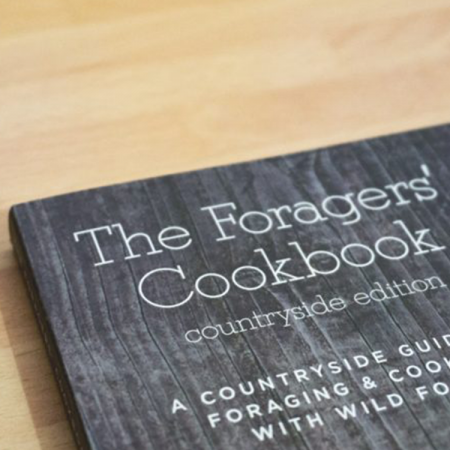
Leave a Reply
You must be logged in to post a comment.